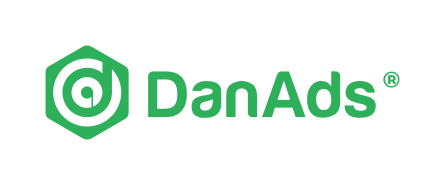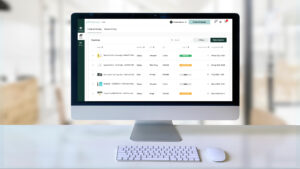Clickbait, fake news, and the death of print. Local journalism has been hit hard in the last two decades - but can an innovative advertising solution save the industry from itself?

Luke Insoll
Content Marketing Manager
The rapid shift from print to digital has impacted every area of media, and certainly local journalism. News media has been slow to adapt to the changing ways in which we consume journalism. In the US, a quarter of all newspapers died between 2004 and 2020. In the UK, the number of regional journalists halved in the same period. The pandemic and near-total economic shutdown of many states has only accelerated this decline.
Local journalism is an important asset to both local communities and the larger democratic process. Its survival is the focus of much attention, with initiatives from both governments and private companies proposed and rolled out.
Advertising is everything
With print on the way out, most surviving local papers have become fully dependent on advertising revenue through their online platforms. Readers are far too used to free content to go back to a paid subscription model. But the advertising ecosystem is murky and often unrewarding for smaller publishers.
Can local journalism survive the tides of change? Maybe – but only by taking ownership of their advertising sales. That’s where self-serve comes into play.
Self-serve advertising is a form of automated ad sales where the publisher controls a branded platform for selling their ad space. Larger publishers with self-serve platforms include Bloomberg Media Group, Cosmopolitan, and Mail Metro Media. Smaller publishers using self-serve include local titles – such as DevonLive, Manchester Evening News, and WalesOnline – operated by groups like Reach Plc.
The problem with programmatic advertising
Local journalism is almost exclusively funded by digital advertising, typically programmatic. But as brand safety becomes increasingly prioritized by ad sellers and ad buyers alike, publishers want greater control over their advertising. The programmatic model does not allow businesses to know for certain where their ad will end up, nor what type of content it will be displayed next to. For local journalism, this is a dangerous liability. The importance of trust and relevance cannot be downplayed.
Additionally, a large proportion of revenue earned by the publisher often ends up siphoned off to intermediaries in the supply chain, such as third-party media agencies and trading desks. This lack of control and transparency generates inefficiencies in the supply chain. Worse, it significantly weakens the buying power of the advertiser and the profitability of the publisher. In the current climate, every penny counts. Programmatic media might be so ineffective that only 20% of the spend reaches the consumer, according to one analyst. Those numbers don’t look good for local publishers if they remain fully dependent on programmatic media models.
Automated advertising is inevitable
The reason that automation is inevitable in advertising is the same as anywhere else: efficiency. The ease of use, cost and time-saving benefits are too great to ignore. Local publishers will embrace automated advertising one way or another, but self-serve offers several powerful advantages over programmatic advertising.
For publishers with their own self-serve ad platforms, they are able to reap the benefits of automation while also exercising full control over their ad sales. By controlling their ad sales with an owned self-serve platform, publishers can see where the spend goes and capture as much of it as possible. Equally as important, they can pick and choose their advertisers with much greater scrutiny. This is vital for brand safety and creating a better experience for readers and users.
SMEs love self-serve advertising
One of the main benefits of self-serve advertising is that it provides easy access for SME advertisers. SMEs (small and medium enterprises) are typically priced out of premium advertising contexts – for publishers, the ROI is too low. But self-serve platforms are scalable, because they cut out manual repeatable tasks. The automation element brings down costs on the publisher side, allowing them to sell ads to smaller advertisers at a higher profit margin.
This is why SMEs have been the driving force behind Facebook’s unstoppable growth as a digital advertiser (Facebook was one of the first to offer low-cost self-serve ads). Most of their substantial ad revenue ($69.7 billion in 2019) comes from SMEs, rather than large corporate clients. Facebook has more than 8 million advertisers but the highest-spending 100 brands account for only 6% of the platform’s ad revenue.
Relevance = revenue
Local news publishers can get in on the action too – and they have a lot to offer. One of the strongest assets in advertising is relevance. How many people see an ad can be much less important than making sure that the right people see the ad. Local journalism is all about finding stories relevant to a localised audience – and that kind of targeting is worth its weight in gold to advertisers.
Reach Plc publishes a large number of the UK’s most successful local and regional news titles. The Reach Ad Manager is a self-serve platform that allows advertisers to reach more than 80% of the UK’s online population. Reach chose to adopt self-serve as a single point of contact with unparalleled publisher control.
Nick Copson, Commercial Marketing Director for Reach, said:
“One of the key trends we’ve seen as a result of the pandemic is accelerated online growth, which is brilliant news for businesses that have invested in their online activities. Right now, digital ads are the single best way of reaching customers who are currently locked down at home, browsing and buying online. Reach Ad Manager makes it easier than ever for businesses to create their own online campaigns and target audiences that matter to them most.”
Local journalism can come back stronger
While the pandemic has undoubtedly challenged local news and journalism, it has also provided a strong incentive for embracing the digital revolution and profitability. In the post-cookie world, precise targeting will be increasingly difficult to come by. Local journalism both sits on traditional targeting options as well as contextual targeting options – making it a strong contender for contextual advertising. With the right technical solutions and an openness to innovation, the sky’s the limit.






